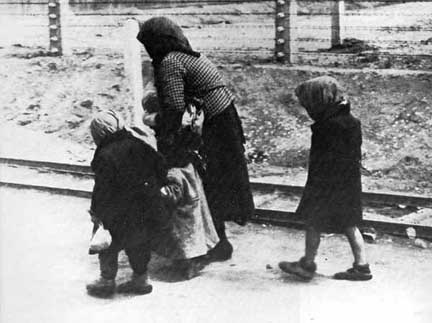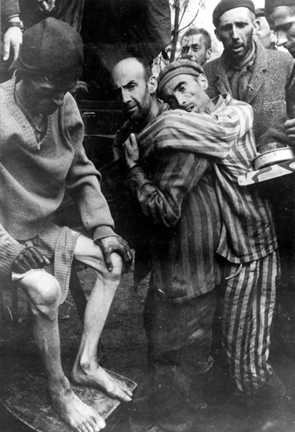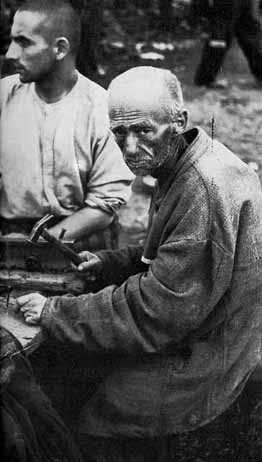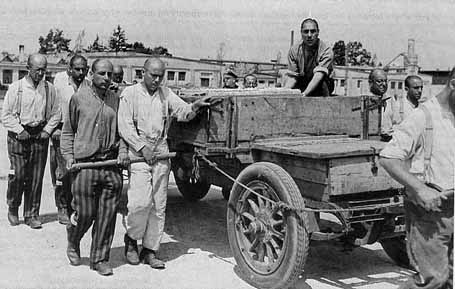Photos in Dachau Museum in 1965The famous photo above, which was included in the "Final Solution" section at Dachau, is from the Stroop Report on the Warsaw Ghetto Uprising which began on April 19, 1943. The 1965 version of the museum at the Dachau Memorial Site put a lot of emphasis on the genocide of the Jews. Although Dachau was a prison for political prisoners and anti-Nazi Resistance fighters, not a death camp for the Jews, there was a large section in the 1965 museum, entitled "The Final Solution," which showed photos from the death camps at Auschwitz and Majdanek, along with horrible pictures taken at Bergen-Belsen, Wöbbelin, and the Warsaw Ghetto. When I visited the Dachau museum in May 2001, the Holocaust section was no longer available and construction work on the new exhibits in the west wing of the service building was in progress. The new Dachau museum which opened in May 2003 is all about the Dachau concentration camp and it does not include the old section called "The Final Solution." Shown below are three memorable photos that were in the Final Solution section of the 1965 Dachau museum. The first photo shows a mother and her children walking to the gas chambers at Birkenau. This photo, from the Auschwitz Album, was taken by an SS man on May 26, 1944 when a transport of 3,500 Jews arrived from Hungary and were immediately sent to the gas chambers. This very famous photo has become a symbol of the Holocaust.  According to the Yad Vashem museum in Jerusalem, the famous photo shown below was taken by a German soldier in the Polish town of Olkusz on July 31, 1940 during a reprisal action against the townspeople after a German policeman named Ernst Kaddatz was killed by members of the Polish resistance on July 16, 1940. In the photo, Jewish men are lying face down on the ground while German Wehrmacht soldiers face the camera behind Rabbi Moshe Isaac Hangerman who is barefoot and wearing tefillin (phylacteries) as he appears to be praying. One Jew and two Polish men were killed during this action and all the men in the town, from 15 to 60, were forced to lie on the ground from early morning until noon as punishment.   All the photos shown on this page were included in the Dachau museum exhibits in 1965. The photo immediately below shows an older man who might have been imprisoned because he was homeless. During the Nazi regime, there was a law that required everyone to work and to have a permanent address. Those who broke this law were rounded up and sent to a concentration camp as "asocials" or "workshy."   The present Dachau museum, which opened on May 4, 2003, states that Gypsies were first brought to Dachau in 1939, but the photo above shows what appears to be a Gypsy man on top of the truck. This photo and the one immediately above it, which also shows what appears to be a Gypsy, were taken in 1938. ContinuePreviousBack to Table of ContentsHomeThis page was last updated on June 10, 2007 |